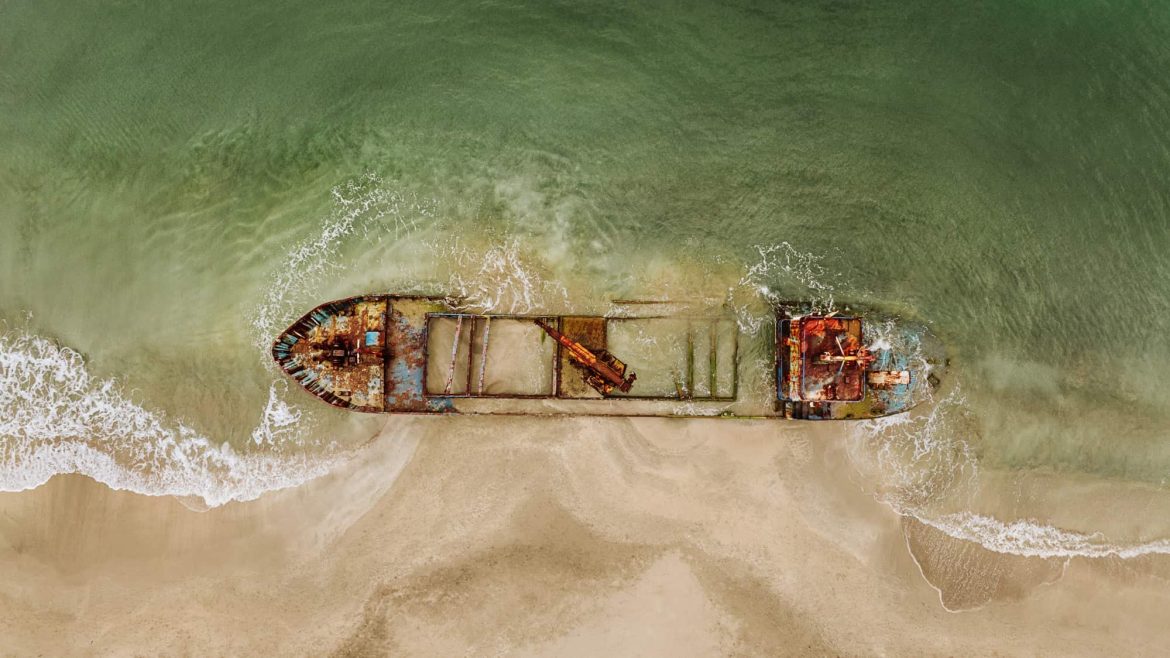Discover the legendary tale of the Yicel shipwreck, an intentionally grounded cargo ship that silently narrates stories of courage and preservation amidst the enchanting Manzanillo in Costa Rica!
Voyage into the Past
On the fateful day of December 8, 2017, the Yicel, a magnificent vessel constructed in 1961, found itself sailing along the mesmerizing Caribbean coast of Costa Rica. With a length of 135 feet, the ship was on a northward journey, destined for the bustling port of Limón. The mission was simple: pick up cargo and perhaps share in the excitement of bustling port life.
A Journey Halted
However, destiny had other plans. As the ship continued its voyage, the hull failed, betraying the ship’s age and allowing water to stealthily infiltrate its interiors. With the pumping system malfunctioning, the crew found themselves in a tight spot, unable to expel the invading waters.
In the face of impending doom, the captain, a seasoned sailor from Panama, made a crucial decision. Instead of allowing the mighty Yicel to succumb to the depths of the ocean, he decided to intentionally ground the ship. And so, the vessel found its resting place at Playa Grande, a stone’s throw away from the serene fishing village of Manzanillo, missing its intended destination by 40 nautical miles.
A Ticking Environmental Time-Bomb
While the captain and the Colombian crew miraculously escaped unscathed, the tranquil village of Manzanillo woke up to an environmental ticking time bomb off its shores. Though devoid of cargo, the Yicel wasn’t empty; it held within its belly approximately 1,600 gallons of diesel and a tank full of hydraulic oil. The stakes were high: a leak would spell disaster not only for the fragile marine life and lush jungles but also cripple the livelihood of a community deeply reliant on fishing and ecotourism.
Unison for Preservation
In the face of looming disaster, Costa Rica’s Ministry of Environment sprung into action. Collaborating closely with the ship’s owners and the Maritime Ports Division, meticulous checks were conducted to identify cracks in the fuel lines. Finding none, a sophisticated system of pumps and bladders were deployed to safely extract all the fuel from the stranded vessel, all achieved within 11 days post the grounding incident.
A Silent Beacon
While initial plans by the Costa Rican government were laid to revive the Yicel by pumping out water to facilitate its towing to port, the plans never materialized. Today, the Yicel stands as a silent sentinel on the beach, partially ensconced in the golden sands of Manzanillo. But it’s not just a wreck; it’s a canvas alive with vibrant art, beckoning urban explorers and adventure seekers from far and wide.
Before You Embark
For those intrigued by the whispers of history and the allure of adventure, the wreck of the Yicel is within reach, accessible from the sprawling beach. It’s not just a visit; it’s a journey back in time, a dialogue with history, and perhaps a moment of reflection on the resilience of nature and humanity amidst challenges.
A Tale Etched in Sand
The Yicel shipwreck is not just twisted metal and aged wood; it’s a chronicle of a voyage interrupted, of swift decisions, and of a community’s commitment to preserving the delicate balance of nature. As the waves kiss its edges and the sun casts its glow on the rusted exterior, the Yicel continues to tell its story, waiting for those willing to listen.


1 comment
[…] Source link […]